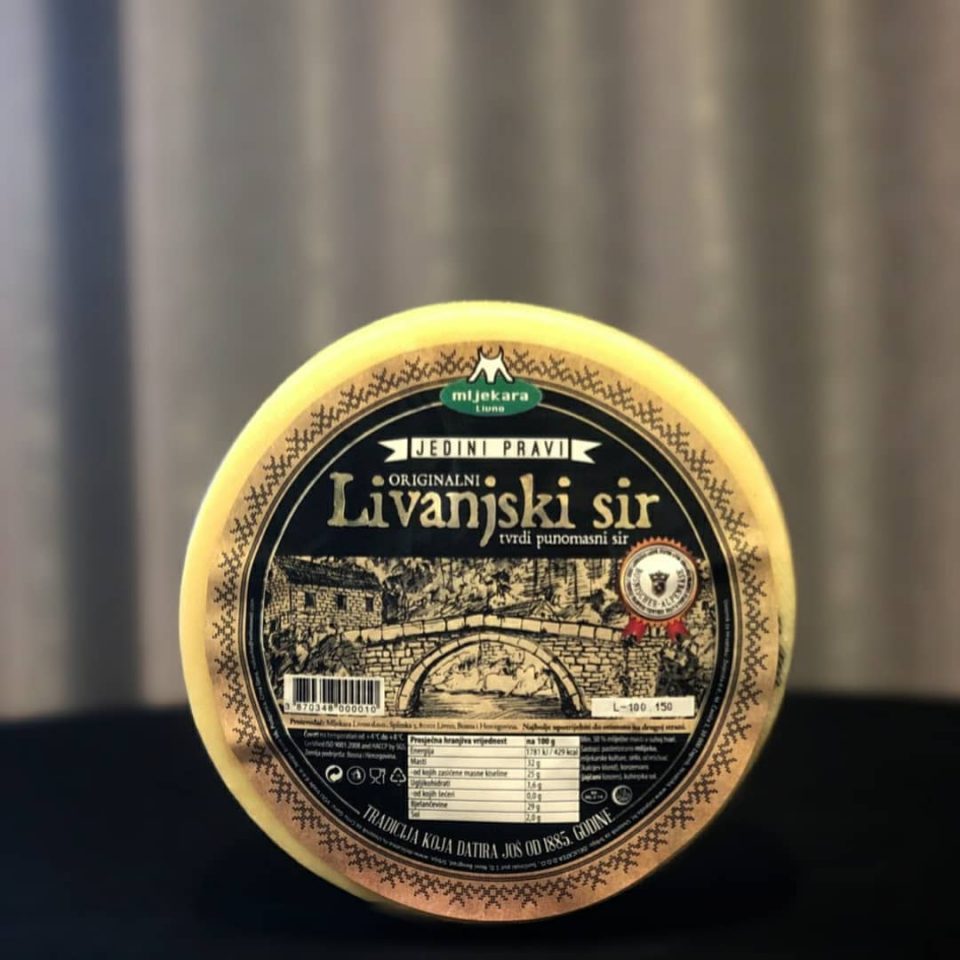6 Tasty Bosnian Cheeses You Should Try

When you think about cheese, which countries come to mind? Do you immediately think of France and its camembert, or perhaps the Netherlands and its famous gouda and edam cheeses. Maybe you prefer Swiss cheeses and can’t resist gruyère, or you’re a big fan of Italian cuisine and can’t imagine your dishes without mozzarella and parmesan?
What if I told you that there was another country with cheese just as good that are waiting for you to try? I am talking about Bosnia and Herzegovina. It might not be so famous when it comes to cheese, but its beautiful mountains, clean air, and plenty of green meadows contribute to the creation of some of the best cheeses you will ever try.
With that in mind, let’s take a look at the best Bosnian cheeses:
1. Vlašićki Sir (Vlašić Cheese)

This brined low-fat cheese is made with sheep’s milk and it got its name from Vlašić Mountain, where it originated, around 1000 AD or earlier. Depending on the amount of brine used for keeping the cheese, its flavor varies, but it is quite salty and mostly dry. White in color, this cheese usually has little holes on the inside but you can also find it without holes.
The variety of herbs the sheep eat is responsible for the milk’s specific flavor, which doesn’t get lost when through the cheese making process.
This cheese is also called Travnik cheese, taking its name from the town of Travnik that lies right below Vlašić Mountain.
2. Livanjski Sir (Livno Cheese)

People from the area of Livno first started producing this cheese in the 19th century. Its production is based on the technology used for gruyère cheese. Initially, Livno cheese was only made from sheep’s milk, but today it is made from the mixture of sheep’s and cow’s milk.
Livno cheese needs to mature for 60-66 days in a controlled environment. This gives it its rich, robust flavor and firm texture. When it ages, Livno cheese develops a tangy, almost pungent flavor. Its rind ranges from pale to dark yellow, while the inside remains pale yellow.
3. Kalenderdovački Sir (Kalenderovac Cheese)

Another cheese named after the area it originated is Kalenderovac cheese. It is eaten while it’s still young, after just 3-5 days. Kalenderovac cheese is specific because of its production technology.
Nowadays, vinegar is added to the milk, which then coagulates leaving small lumps that are collected and formed into cheese. In the past, whey was used rather than vinegar. A dried gizzard, taken from a sheep, cow, or goat was soaked in the whey and added to the cooking milk. This would cause the milk to coagulate.
Kalenderovac cheese has a firm texture, with little or no holes, and a mild and pleasant flavor, similar to Italian mozzarella. It is white in color, but when it is dry-aged or smoked, its rind becomes dark yellow, almost orange.
4. Basa

Also called Lički sir (Lika cheese), basa is a soft cheese perfect for spreading on homemade bread. It is made when yogurt or sour cream is added to warm milk and left in a warm place for several hours.
The milk coagulates and is drained in a colander lined with clean gauze. This allows the brine to escape and a soft, spreadable cheese remains, which needs to be seasoned with salt to develop its distinct flavor. Basa has a mild, subtle salty flavor and a white to pale yellow color.
5. Urda

The most popular Bosnian cheeses are usually made with sheep’s or cow’s milk, but that doesn’t mean that you can’t find good goat cheese here. Urda is a type of goat’s cheese made of brine. It is low-fat, full of proteins, and has many health benefits, such as blood sugar regulation and liver regeneration.
Urda has a mild, almost neutral flavor, which makes it a great addition to any recipe. This cheese is not as easily found in grocery stores as some other cheeses on this list, but if you get a chance to try homemade urda, don’t miss it! Other names for urda cheese are skuta, furda, hurda, and bjelava.
6. Kajmak

Another popular dairy product in Bosnia and Herzegovina, kajmak, is technically not a cheese, but it is so popular that I had to include it on this list. Bosnian kajmak is made when cow’s, sheep’s, or goat’s milk is boiled and allowed to cool. A thin skin forms on the surface of the milk, which is collected several times while the milk cools down completely. The kajmak is salted lightly and stored in the fridge for several days.
Kajmak is best when eaten as fresh as possible. It is most often used in various Bosnian pies, but it’s also used as a side dish to pljeskavica, ćevapi, and other popular Bosnian dishes.
As a mountainous country, the people of Bosnia and Herzegovina learned raise plenty of livestock. This created a huge potential for producing high-quality cheeses. Today, there is a wide assortment of cheeses that will satisfy even the most discerning of cheese lovers. With this list, we have introduced you to just a taster of the many great Bosnian cheeses. It is up to you, dear reader, to explore and try them all!
Related: Most Popular Bosnian Foods
Related: Most Popular Bosnian Desserts
Related: Most Popular Bosnian Drinks


